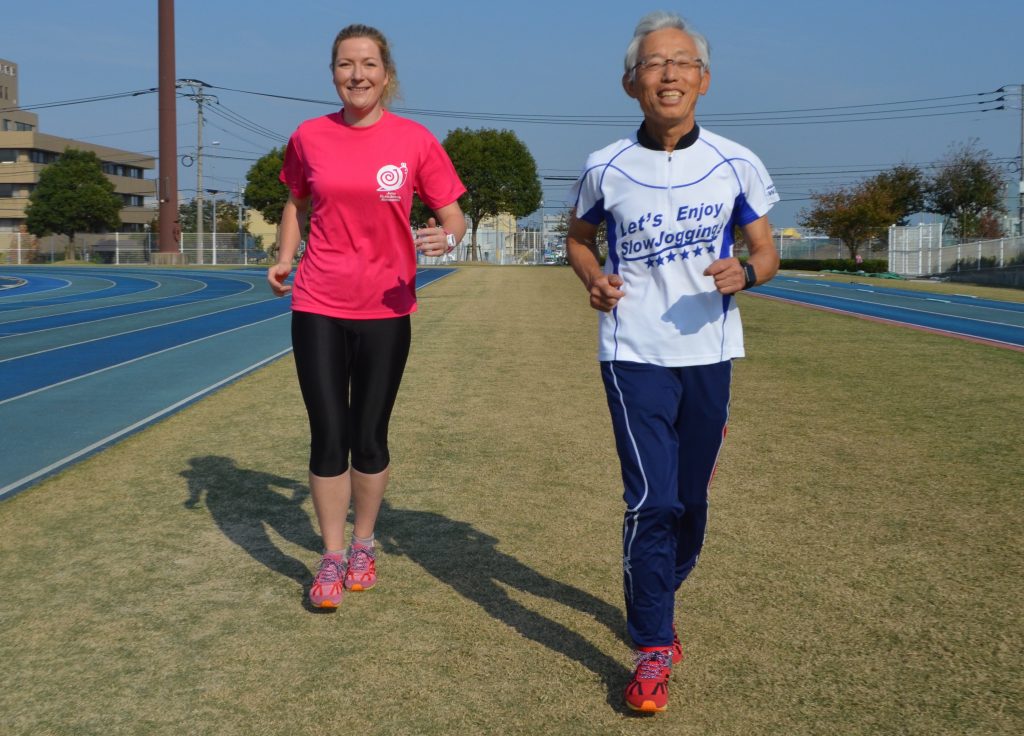Used to be unknown outside of Japan but now gaining more and popularity worldwide, slow jogging is an exercise method elaborated by Prof. Hiroaki Tanaka. The term ‘slow jogging’ was chosen for emphasis, that even though we are talking about a sport traditionally associated with moving fast, slow can be a perfectly good way to do it.
It is an efficient, healthier, and pain-free approach to running for all ages and lifestyles. Slow jogging is more like taking a walk, at the intensity light enough to enjoy conversation or, if by yourself, to just smile. For most beginners, it means jogging at a walking pace.

Your own version of ‘slow jogging’ can be thought of as conversation-pace running. If you can pretty easily have chat with a buddy, then that is your slow speed. If you are more apt to track your heart rate on runs, a gentle pace would likely find your heart rate at approximately 110 to 140 beats per minute.
Benefits Of Slow Jogging
- Establishes efficient form.
- Strengthens muscles.
- Promotes efficiency of respiratory, cardio, and muscular systems.
- Fosters handling of physical discomfort and improves discipline.
- Facilitates adaptation of ligaments, tendons, bones, and joints to the stress of running.
- Increases size and number of mitochondria, thereby improving the use of oxygen and glycogen storage.
- It Burns more calories than high-intensity sprints.
- Helps the body flush toxins resulting from muscle fatigue.









Leave a Comment